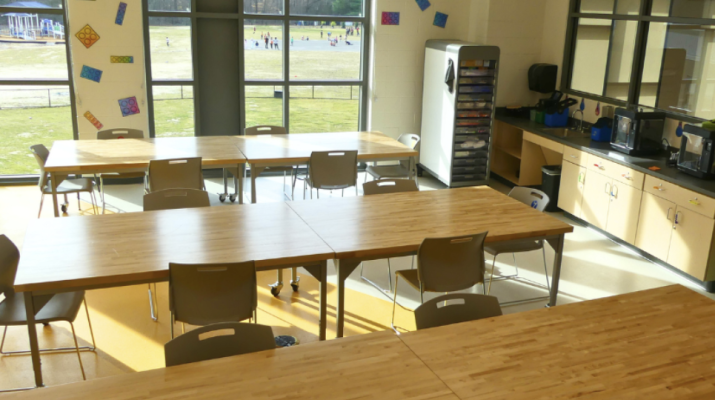School divisions across the nation have become a part of the makerspace movement. These divisions are working to give students access and opportunity to engage in maker activities that support growth in STEM education, encourage creative thinking, promote curiosity and facilitate collaborative opportunities. As a result, an increasing number of districts are establishing fab labs or STEM labs, designating tinker times throughout the day and/or providing staff with professional development and resources that encourage student participation in open-ended exploration. This movement has created an opportunity for tech educators/leaders to establish a creative STEM space in their school.
Setting up a creative exploration space in your school can seem overwhelming but here are several things to consider as you begin to develop or enhance this learning space.
Establish a vision or mission statement for this space.
Involve your school administrators, staff and students as you establish the vision and goals for this space. This is where you need to establish the why. Collaborate with administration, staff and students to create excitement and ownership over the vision for this space. Social media platforms and Google can provide inspiration for your visioning and planning.
Make a plan.
Before spending funds on equipment and materials, make sure you have answers to these questions:
- When will students and staff access this space/cart? Will classes have a scheduled rotation into the lab or will it be an open collaborative work space?
- Who will manage this space? Will it be an individual or a shared responsibility?
- What is the budget for this space? How will it be funded? Will there be consistent funding or a one-time grant?
- What major equipment or “big ticket items” are needed for the space? Will furniture and storage solutions need to be purchased?
- How will materials and projects be stored and organized?
- How many electrical outlets are needed? Is there an accessible sink? What are some important room features?
This is a crucial step! Answer these questions to ensure nothing is overlooked.
Bring it all together. This is the fun part!
After brainstorming with your planning team and making sure the plans align with your team, school or district’s goal for the space, now it’s time to put it all together. Create a supply list of both consumable and non-consumable items. Some non-consumable items that may be considered for the lab include 3D printers, robots, green screen with accessories, camera, tablets or laptops, etc. Examples of consumable items include filament (for the 3D printers) tape, cardboard, construction paper, string, popsicle sticks, pipe cleaners, etc. It’s important to have a balance of both consumables and non-consumables when creating a supply list for your collaborative learning space. Build a spreadsheet with these items listed, links to where items will be purchased and item totals to manage your expenses.
Keep it rolling.
Once the STEM space is established, it’s important that materials and equipment are maintained and replenished as needed. Create a lab/cart wishlist that can be shared with families and the community because many items that are needed in a makerspace or STEM lab are everyday items that are typically recycled. Create large donation containers at the school entrances to encourage item donations. Consumables and heavily used items in the lab will need to be replaced often. A “Running Low” list can be posted on a whiteboard or on a shared document so resources that are almost depleted can be replenished.
Celebrate it.
Host a family STEM night to encourage families to utilize this space and see what projects students are working on. Visibility and family STEM education is an integral part of creating and maintaining a shared learning space like this. These events allow for students to have an authentic audience and they get families excited about all of the things that are happening in the STEM space and school.
Makerspaces or STEM labs can come in all shapes and sizes and they can be structured or more organic. However, at the end of the day, the important thing is that you are giving students opportunities to learn, collaborate together and explore in settings where both innovation and curiosity are supported.
Authorship Information
Courtney Lewis is an Instructional Technology Resource Teacher for New Kent County Public Schools. She has had the opportunity to start up STEM labs in two elementary schools in New Kent County. Prior to being an ITRT, she was a 1st grade teacher for 10 years.

